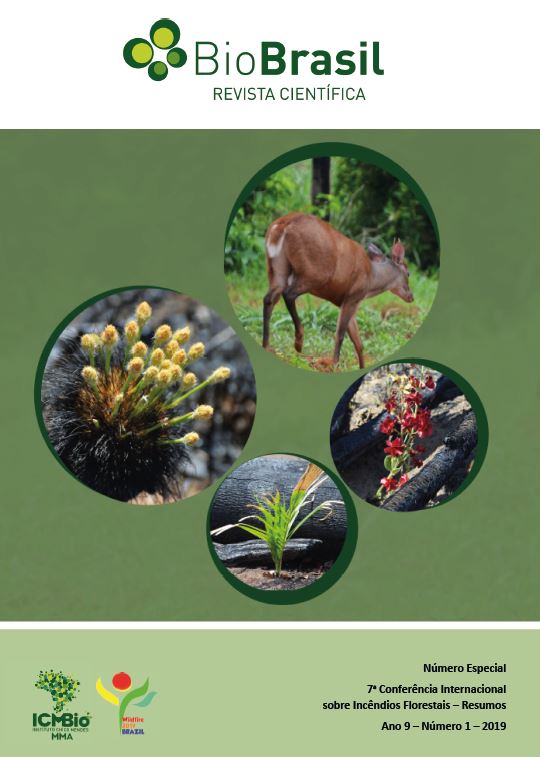A near real time monitoring and warning system for wildfire prevention in the Acre state
DOI:
https://doi.org/10.37002/biodiversidadebrasileira.v9i1.1279Keywords:
Amazon, fires, wildfires, remote sensing, monitoring system, decision makingAbstract
Wildfires are responsible for great socio-economic and environmental damages every year. In the Amazon, fire occurrences are associated with land clearing and management practices and during the process of deforestation and agricultural expansion. Fire frequency, on the other hand, is related to the hydrological regime, and it is higher in the end of the dry season. There is also a direct relationship between extreme dry events with the number of large wildfires occurrences in the Amazon. During extreme drought conditions, fire-related gross carbon dioxide emissions can account for more than half of emissions related to land use and land cover change. Moreover, recent studies indicate a high probability of increasing the intensity and frequency of extreme droughts, leading the region to a fire-prone system. Supported by the National Policy on Protection and Civil Defense (PNPDEC) (Law No 12608), the development of monitoring systems can integrate the wildfire risk management, promoting the identification and evaluation of hazards and thus guide the decision-making. The objective of this work is the technical-scientific development of a monitoring and warning system of fire risk and impacts. In its first phase, we aim to develop the integration of fire occurrences from remote sensing data and geodata of rural properties of the Rural Environmental Registry (CAR), for the Acre State. The proposed system currently generates automatic and near-real time information about fire location, identification of rural properties, their owner, and land use and land cover of where fire is occurring. As well as providing a website to monitor the alert situation by the users, the system automatically generates warning bulletins, which can be used by environmental and control agencies to subsidize and coordinate response plans to prevent fire spread. The system is being tested in the Acre state situation room. Currently in its evaluation phase, we are now collecting stakeholders' feedback for the tailoring of the final information to be produced. The development of this project generated a methodology for the construction of a fire monitoring and warning system adequate for local and regional use, which will be replicated in other areas in Brazil, and potentially worldwide.
Downloads
Downloads
Published
Issue
Section
License
Copyright (c) 2021 Biodiversidade Brasileira - BioBrasil

This work is licensed under a Creative Commons Attribution-NonCommercial-NoDerivatives 4.0 International License.
Os artigos estão licenciados sob uma licença Creative Commons Atribuição-NãoComercial-SemDerivações 4.0 Internacional (CC BY-NC-ND 4.0). O acesso é livre e gratuito para download e leitura, ou seja, é permitido copiar e redistribuir o material em qualquer mídia ou formato.











